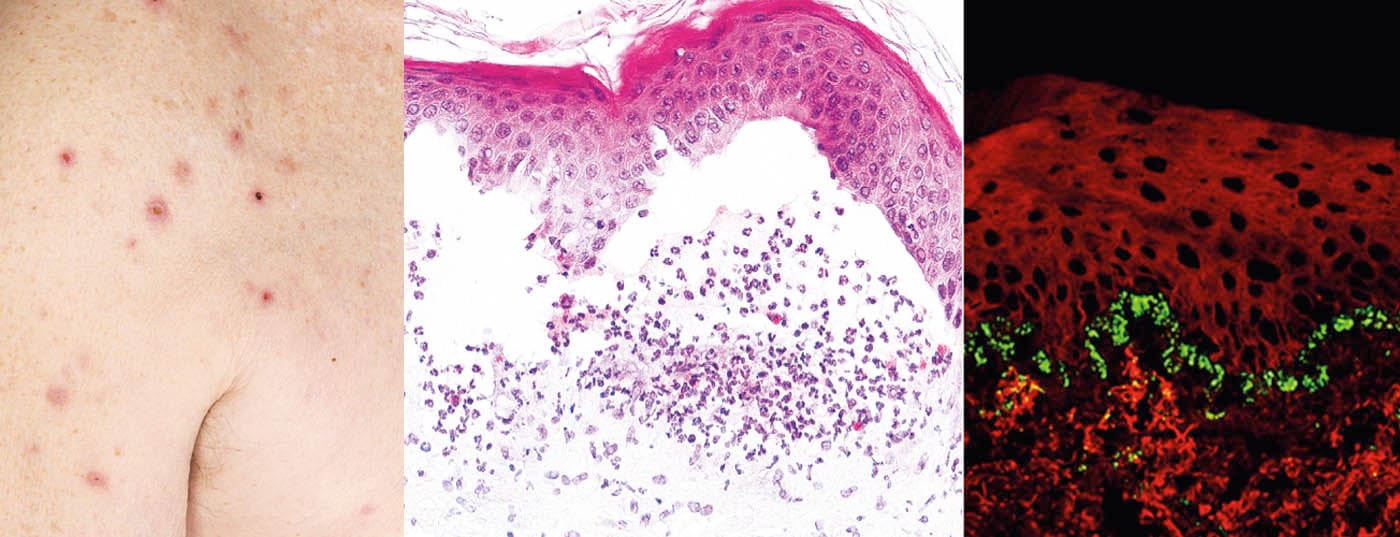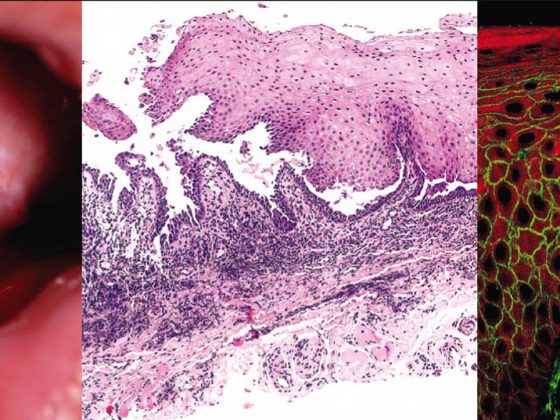Almost daily we are confronted with complex autoimmune diseases of the skin in dermatological practice. These include autoimmune bullous dermatoses and cutaneous vasculitides, which are discussed in more detail in the current issue of DERMATOLOGIE PRAXIS. Accurate diagnosis of autoimmune bullous dermatoses and cutaneous vasculitides is often difficult because both groups of diseases have a varied appearance on the skin. Nevertheless, a fast and accurate diagnosis is important for the initiation of a correct therapy and the avoidance of consequential damages.
The first article in this series discusses bullous autoimmune dermatoses, which are predominantly caused by autoantibodies. These attack the cutaneous integrity, resulting in skin detachment. In practice, this raises the important question: How can the different forms be distinguished or how can they be accurately assessed diagnostically? In our article, we describe the most important clinical features and go into more detail about the histology and immunofluorescence associated with each. In particular, autoantibody detection on tissue sections or in serum ultimately secures the diagnosis and clears the way for the right therapies. These range from the classic corticosteroids to newer antibodies that target immune cells.
In the second article of this series, Stephan Nobbe, MD, senior physician at the Department of Dermatology Frauenfeld/Zurich, summarizes the complex clinical picture of vasculitides in an excellent and concise manner for the clinically active dermatologist.
In these conditions, which are also very heterogeneous and sometimes inconsistently classified, inflammation in the vessel walls leads to tissue damage. The inflammations can be limited to the skin, but can also affect the organs and thus be life-threatening. Consequently, Dr. Nobbe refers in his article to the importance of quickly clarifying any possible involvement of internal organs when vasculitis is suspected, in order to avoid acute kidney failure in Schönlein-Henoch purpura, for example. The article not only discusses the possible classifications of vasculitides, but also provides insight into the pathogenesis and gives practical advice on clinical presentation, diagnosis and therapy.
This issue of DERMATOLOGIE PRAXIS provides you with a broad and informative overview of these important disease groups, and we thus wish you an exciting read!
Dr. Emmanuella Guenova, M.D.
Dr. Dr. Wolfram Hötzenecker
DERMATOLOGIE PRAXIS 2014; 24(4): 4











